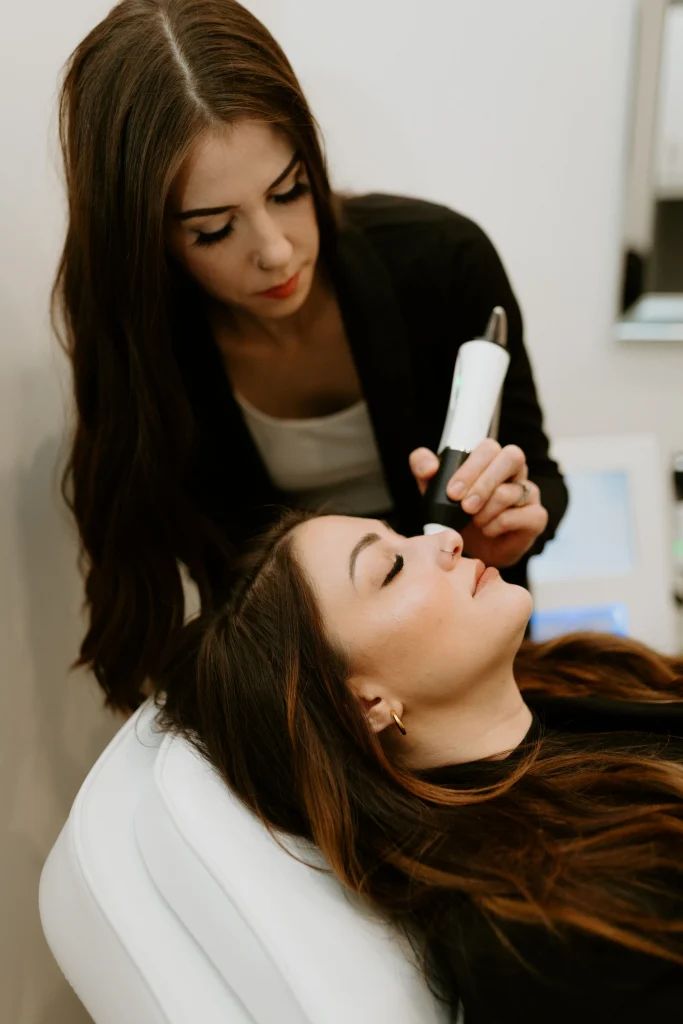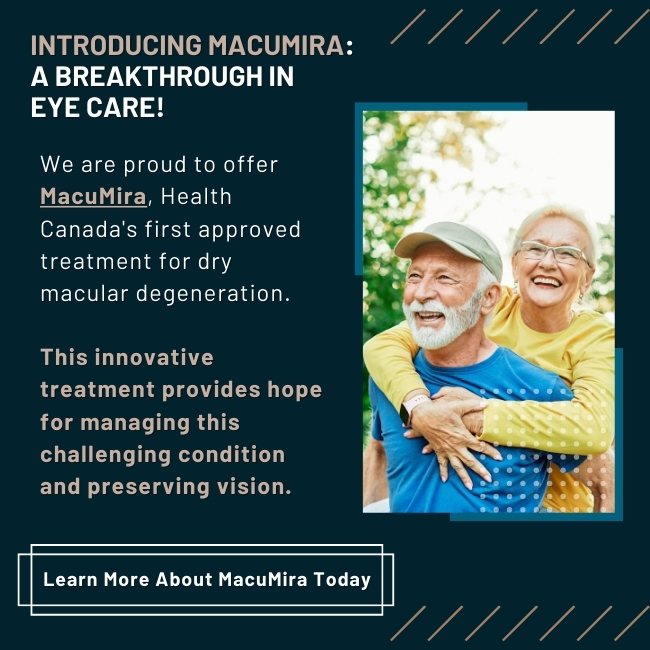So let’s talk about dry eyes again but this time, let’s talk about what we can do when you exaust all of your at-home options and need help from the team at the Kennedy Eye Clinic.
Let’s recap a few things first: dry eye syndrome results when either the eye does not produce enough tears or when the tears evaporate too quickly. Symptoms can include: redness, burning, irritation, soreness, itchiness, heavy eyes, fatigued eyes, fluctuating vision, and blurry vision. Please check out my previous blog post for the dry eye basics, including types of dry eye and at-home remedies.
Let me list some of the common causes of dry eyes, most of which, as you’ll notice, are unavoidable.
· Computer use
· Contact lens wear
· Aging and menopause
· Environmental factors, particularly dry prairie climates that lack humidity
· Health conditions, particularly auto-immune diseases
· Certain medications, particularly anti-depressants, acne medications and anti-histamines
· Smoking
· Prior laser eye surgery
· Incomplete lid closure while sleeping or other eyelid conditions
· Sleep apnea, particularly CPAP use
At the Kennedy Eye Clinic, we offer various dry eye assessments with a valid SK health care card:
1. Dry Eye Consult: you meet with one of our doctors for a consult to determine what at-home and/or in office treatments would be most beneficial for you.
2. Dry Eye Assessment: is the dry eye consult + imaging to determine which type of dry eye disease you have so a customized treatment plan can be created. We will take images of the meibomian glands on your upper and lower lids so we can figure out if there has been any gland atrophy, we will measure how fast your tear film evaporates, and we will also tell you the amount of tear volume you have in each eye.
3. Dry Eye Assessment + Tear Osmolarity: is the dry eye assessment with a measurement of your tear osmolarity, which is essentially measuring the amount of salt you have in your tears. If there is too much salt in your tears, it leads to improper tear production, distribution and elimination.
If dry eye symptoms are more serious and persistent after doing at-home therapies, then in-office treatments are considered. Treatment options will depend on what type of dry eye the patient is experiencing and its severity. At the Kennedy Eye Clinic, we are the first and only optometry clinic in the entire province to have RF, Lipiflow, and IPL to treat dry eyes and MGD. Ideally, a combination of RF and/or Lipiflow with IPL treatments will have maximum efficacy to unclog the glands while also simultaneously treating the associated inflammation.
In-Office Treatment Options:
1. Lipiflow Treatments:
Lipiflow uses thermal heat to treat chronic and severe symptoms of MGD; the machine uses thermal pulsation to unclog and express the glands rather than a doctor doing it for you manually. After the treatment, the meibomian glands gradually start to re-produce their own oil again except this time, the quality is much higher since all the cloggages were removed; it takes about 4-8 weeks before you start noticing the effects of the procedure.
· Treatment Time: 15 minutes total.
· Downtime: None.
· Level of Discomfort: None.
· Procedure: An anaesthetic drop is put in the eye and then a cornea shield is put in place.
· Skin Types: All.
· Frequency: Once a year.
There are essentially no contra-indications for someone to get Lipiflow as it is super safe and non-invasive.
2. Radiofrequency (RF) Treatments:
RF heats up the meibomian glands and gives immediate relief to clogged glands and improves their function. It is non-invasive and works by sending radiofrequency energy to the tissues of the skin; the natural resistance of the skin to the currents generates heat and because of this temperature increase, it promotes tissue remodeling, increased blood circulation and detoxification. RF is also great for people who also want to tighten skin and reduce fine lines, wrinkles and dark spots around the eyes; monopolar RF is better for aesthetics than the traditional tripolar RF we use for dry eyes. We can add on other parts of the face and/or neck for an additional fee.
· Treatment Time: 20-25 minutes total.
· Downtime: None except some redness around treatment area for an hour after.
· Level of Discomfort: None during but post-procedure, there is gland expression done by the doctor which can be found to be uncomfortable but not painful.
· Procedure: a gel is placed on and around your eyes. If the upper lids require treating, an anaesthetic drop is used before a corneal shield is put onto the eye.
· Skin Types: All.
· Frequency: 5-7 spaced 2-3 weeks apart to start then 2-3 visits a year after for maintenance.
3. Intense Pulsed Light (IPL) Treatments:
IPL targets the blood vessels themselves and work on reducing the inflammation that is associated with MGD as well as unclogging the glands and improving their function. It is actually one of the only treatments that may help regenerate the meibomian glands themselves and actually addresses treating the cause of dry eye syndrome. IPL can also reduce the look of fine lines and wrinkles, treats dark circles around the eyes and stimulates collagen production. As such, IPL can also be used to reduce the appearance of acne and acne scars, sun damage, melasma, chalazions, and rosacea; if you would like to treat other areas of your face/neck with IPL in addition to your dry eye treatment, we can do this for an additional fee.
· Treatment Time: 15-20 minutes total.
· Downtime: Some redness around treatment area for an hour after.
· Level of Discomfort: it feels like you are being flicked by an elastic band 26 times. Post-procedure, there is gland expression done by the doctor which can be found to be uncomfortable but not painful.
· Procedure: Ultrasound gel is put on and around the treatment area and UV protection is given. Sometimes an anaesthetic drop is put in the eye and then a cornea shield is put in place.
· Skin Types: 1-3, sometimes 4.
· Frequency: 4 spaced 2-3 weeks apart to start then 1-2 maintenance visits per year.
More side effects can occur with IPL than RF and Lipiflow, most of which include burning, redness and some bruising.
Ideally, a combination of RF and/or Lipiflow with IPL treatments will have maximum efficacy to unclog the glands while also simultaneously treating the associated inflammation. Usually Lipiflow is our go-to to combine with IPL treatments since you don’t need to come in for so many visits to achieve the exact same result. If skin tightening is a priority to you, I would choose RF over Lipiflow.
I bet you’re probably wondering… what are the next steps? Consult your Doctor of Optometry to see what you should be doing and what procedures you would be a candidate for. At our clinic, we can start with one of our many dry eye assessments and make a customized treatment plan from there. You do not need to be a previous patient here to begin in our dry eye clinic although we do encourage you to go back to your normal Optometrist for routine care. All of our prices are listed on our website as well. We are here to answer all of your questions and we want to help you feel better!
Thanks for reading!
-Dr. K



